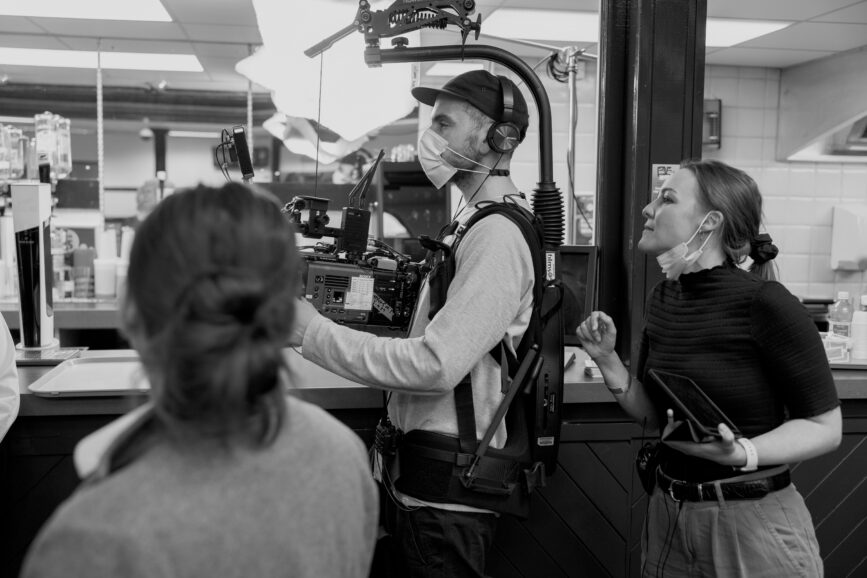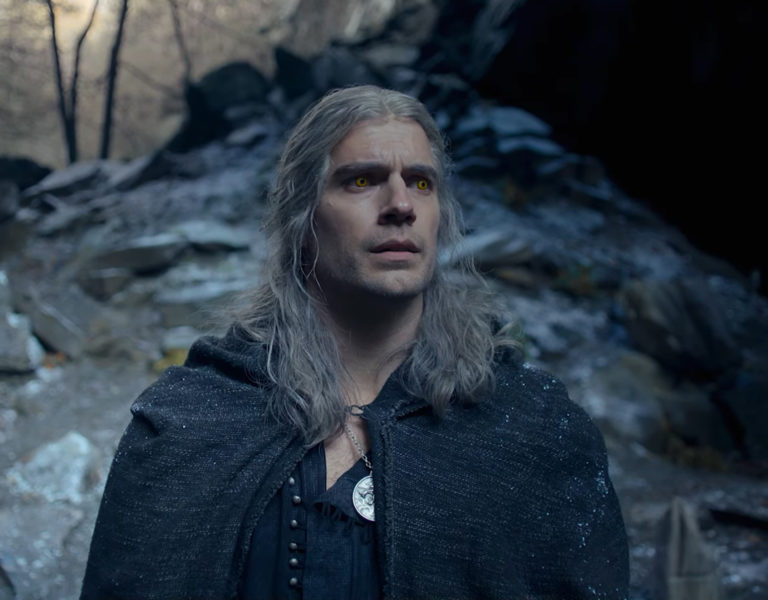Girl, uninterrupted
A Welsh coming-of-age drama that crackles with wit and woe, BAFTA-winning In My Skin embeds itself in the turbulent world of sixth former Bethan. Joining to lens the production’s second season was cinematographer Christopher Sabogal, who brought a fresh angle to Bethan’s story.
As the second season of the BBC mini-series In My Skin begins, things seem to be looking up for Bethan Gwyndaf (Gabrielle Creevy). After all, she’s been made head girl of her school and university is fast approaching – much to the delight of her proud grandma. But a home situation punctured by mental illness, alcoholism and abuse, along with the usual ups and downs of teenage relationships, means that life is far from straightforward for the straight-A student.

“It felt quasi-documentary, quasi-real-life, quasi-drama,” says Christopher Sabogal as he remembers first reading Kayleigh Llewellyn’s script, which is partly based on her own experiences growing up in Cardiff. “I loved the script and the characters. I was lucky to have seen the actors perform their characters in the first series, so you could read the script and see how it could potentially be with them in mind. I was moved on many levels.”
Picking up the mantle from season one DP Benedict Spence, Sabogal set to work with director Molly Manners, whom he had met at 4Creative when his focus was on shooting commercials. “Molly and I had many discussions about how we wanted to approach the visual style,” he says. “We didn’t want it to feel too disconnected from the first series, in the way the camera moved around Bethan. At the same time, when I first read Molly’s treatment for the second series, she talked about making Bethan’s world bigger and there was the chance to become a little bit more expansive with the language.”

Principal photography took place over five weeks in and around the Welsh capital. “We had a month of sunshine – everyone in Cardiff was shocked by how amazing the weather was,” the London-based cinematographer recalls. “We didn’t have the luxury of scheduling around where the light was going to be, but we could use the sunshine or block it out as much as we wanted, so we always had that on our side to build on.”
Sabogal’s small but resourceful team included “fantastic” gaffer Bryan Gavigan. They opted for a naturalistic approach to lighting, expanding on what already existed to adhere to the production’s rooting in reality. The lighting was warmer when Bethan was in a more comfortable part of her life – with her love interest, Cam, for example – and cooler in her own home, where she felt less at ease.
Another key figure was focus puller Trevor Speed. “We did rehearse but other times we wanted to let things flow,” says Sabogal. “I found the actors on this show wanted to be fluid and not have to be hitting precise marks, so I think Trevor did an incredible job of following the artists round and being creative with his focus. He had a great sense of timing and movement.”
Sabogal also credits Luke Morrison, head colourist at the Electric Theatre Company for his “incredible craft in adding great depth to the naturalistic but filmic look and feel of the show.”

In My Skin was shot on the Sony VENICE, whose Rialto mode proved especially valuable for Sabogal “anywhere small and tight, like driving scenes, or where we wanted to be nimble and quick.” Budget-wise, the camera’s high ISO was a winner for night-time scenes or where huge streets couldn’t be lit.
The VENICE was paired with Cooke S4 lenses – a long-time love of the cinematographer. “I’ve done most of my drama work with Cooke S4s. It felt like a good lens and image that suited that naturalistic look. The Cooke look that everyone talks about – it worked nicely with the Sony sensor, I think.”
Handheld shots were a hallmark of In My Skin’s first season and a style that Sabogal was keen to continue. “We wanted to keep the feeling that you’re constantly travelling around Gabby’s world. It just felt like you were attached to her, pivoting constantly around her.”

One aspect where he really puts his creative stamp on the second season is in the composition. “There was a distinct isolation in how people did or didn’t share frames,” he says, “especially in relation to her dad – that feeling of distance. I think that’s maybe where we tried to depart from the first series, because they have a very clever technique that they used and stuck to, which worked really well. We didn’t feel like we always wanted to be on Bethan’s shoulder and seeing what she’s looking at all the time. Instead, we could use a little more traditional cinematic language to give someone else a presence.”
Working with a limited budget was both a challenge and an unexpected bonus for Sabogal. “Obviously it also came with its limitations – how much time you had to shoot in a day, for example. But in some ways, it gave us a lot of creative freedom, in the sense that there weren’t people looking over our shoulders the whole time.”

He remembers a particularly tricky moment during shooting: “We had a really small window to shoot a night scene in the car park at the end of episode one. There wasn’t the budget to completely lock off the locations, so you had people wandering in. I remember once, some kids ran in and pushed the lights over!”
Filming an intense fight scene involving Bethan’s troubled parents (Jo Hartley and Rhodri Meilir) left a lasting impression on both Sabogal and viewers. “When we did the rehearsals, it was shocking – even when they’re doing it at half speed. Even when I watch it now, the hairs on the back of my neck stand up because it’s so harrowing. To film that and make it feel as rough and raw as it was, that was challenging. But I think we reflected the intensity of that moment really well – from a technical perspective as well as emotionally.”










